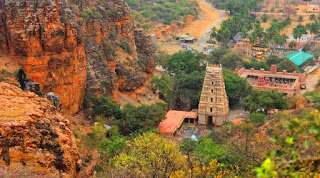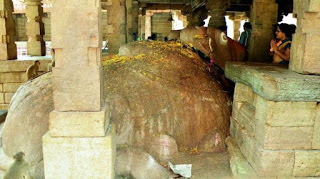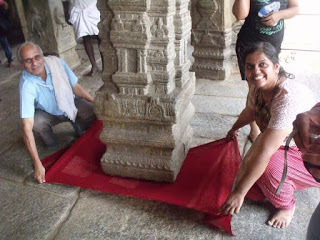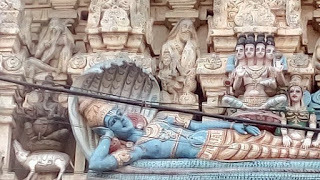Srivalli Rekha (Semi Hiatus)'s Blog, page 76
April 28, 2021
The Growing Nandi of Yaganti
Dating back to the 5th and 6th centuries
With contributions from not one but four empires
The Pallavas, Cholas, Chalukyas, and the Vijayanagara
Yaganti Uma Maheshwara aalayam was
Built and developed over the centuries
Kings Harihara and Bukka Rayalu of the Vijayanagara
Gave the most contribution
And finished the various structures in and around the region
Source: Hit Full
Yaganti is famous for its natural beauty in the Yerramala Hills
And the pure pushkarini water
Which no one knows where it comes from
Bhakts believe that a dip in the pushkarini
Is a must before visiting Shiva to take his blessings
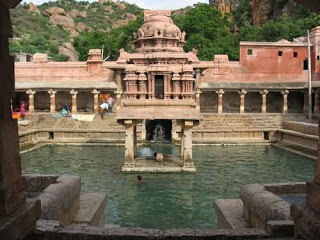 Source: RVA Temples The only aalayam to have a murti of Prabhu Shiva
Source: RVA Temples The only aalayam to have a murti of Prabhu Shiva And his wife, Devi Parvati
Instead of his ling form
Ardhanareeswara, they are called,
One body and two souls-
Half for Shiva and half for Maa Parvati
Agastya muni, they say performed penance here
Requesting Shiva to appear in the said form
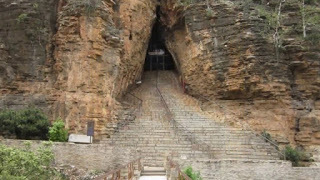 Source: RVA Temples
Source: RVA TemplesDo you know that crows don’t fly in Yaganti
Because of a curse from Agastya
Who was disturbed by Kakasura, the king of crows
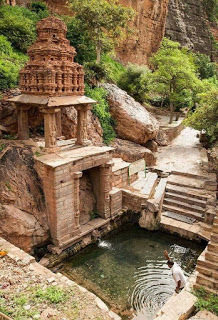 Source: Kuzey Pek- Pinterest
Source: Kuzey Pek- PinterestThere’s more to this place than we’ll know
One of which is the growing Nandi murti called the Basavanna
One pillar in the mandir had to be removed
As the Nandi grows each year,
Occupying more space in the premises
Source: Deccan Chronicle
************
Note:
According to an archaeological survey, the Nandi grows at the rate of 1 inch per 20 years. That’s around 10mm per 8 years. It is said to be made of a rock that has natural properties to expand and grow over time.
Pushkarini- a holy water body in a temple
*****************************************************************************
Source:
**************************************************************************
#FreeHinduTemples

A Letter to the Last House Before the Sea- Book Review
(Heaven's Cove #2) Standalone
Publication Date: 19th May 2021
Genre: Women’s Fiction, Small Town, Romance
4.2 Stars
Lettie Starcross goes to Heaven’s Cove to find the truth from the past her great-grandaunt, Iris, was never able to when she was alive. Lettie is the first guest at Driftwood House (belonging to Rosie from book 1).
The setting is magical, but the path to the past is filled with difficulties. Trying to stand up for herself and get mowed by her ‘affectionate’ family, Lettie uncovers her beloved aunt’s tragic love story, one step at a time.
Of course, we have Corey, a handsome fisherman, his grandmother Florence, the only link to the past, and Claude, an old loner who slowly begins to trust Lettie.
When I saw the cover, I realized that I read book one and rather liked it. I had to read this too. For me, this book was better than the previous one. There was a sense of tension that held the plot together, which I rather missed in book one.
The author continues to use the setting to the best advantage. We see the crashing waves, the rocky hills, slopes, and the changing skies. As someone who when loves nature is a tangible element of the story, this interweaving of surroundings with the plotline makes me happier.
The characters were very developed, though Corey’s character could have been explored more. It had a lot of potential. Claude was fantastic (yeah, I’m an old soul and connect more with characters aged over 70). The scenes between him and Lettie were beautiful to read.
I did wish Lettie to be more assertive with her family. But there has been some progress that feels more realistic.
Overall, this is a beautiful book set in a picturesque setting. Some of it is cliché, but it’s still a feel-good book and will leave you with a smile. The author mentions that she’s working on book 3 of the series, and I’m looking forward to grabbing that one as well.
I received an ARC from NetGalley and Bookouture.
***
P.S: I'd have loved it if Lettie was called by her full name, Violet, instead of the short version. It seemed to suit her more.
#ALettertotheLastHouseBeforetheSea #NetGalley
April 27, 2021
Xelvona Tour- Let's Go Goa Again
With no much information found
I make do with what I have
Shri Sateri mandir houses Maa Bhagawati Devi
The deity of Aldona brought to the village in 1978
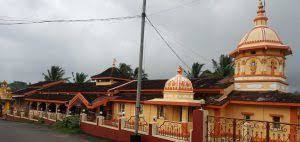 Source: Vpaldona
Source: VpaldonaThe mandir was built on donation money
Given by one and many
Each of whom sponsored
The golden kalasha, the sabhamandap, & the Pravesh dwar*
Over a course of time
***********
Note:
Kalasha- An auspicious pot established with water inside and a coconut on the top
Sabhamansap- a semi-open space where temple-related events take place
Pravesh dwar- Entrance Door
*******************************************************************************
Sangameshwar Temple, Sanguem, Near Xelvona- South GoaThe only way I can possibly write
About a place this lovely
Is to visit and see with my own eyes
But until then-
All I can say
Is that the Sangameshwar mandir in Sanguem
Lies submerged in water during the monsoons
Only the top of the gopuram you can see
If you go close enough to the gushing waves
However, on Mahashivratri,
The auspicious festival in the month of Feb
The mandir stays dry and ready
For bhakts to pray to their favorite Bhagwan
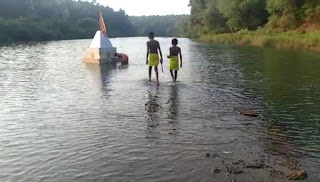
Source: Goemkarponn
*****************************************************************************
Source:
https://vpaldona.goa.gov.in/bhagwati-temple/
********************************************************************************
#FreeHinduTemples

April 26, 2021
Warangal to Wayanad
The Kakatiyas and art were almost synonyms
Building marvelous structures
Glorying their bhakti and kala*
Ramappa aalyam gets its name
Not from the Prabhu who resides but
From the sculptor who built it
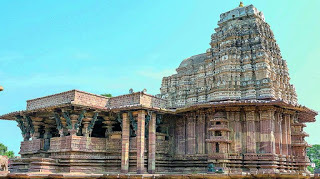 Source: Deccan Chronicle
Source: Deccan ChronicleDating back to 1213 AD
King Kakati Ganapati Deva
And his Chief Commander Rudra Samani
Decided on a place called Ranakude
For the temple to rise high
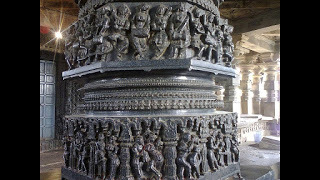 Source: Everyday is a Journey- YouTube
Source: Everyday is a Journey- YouTubeFour decades it took for the aalyam to be complete
With bricks so light, they floated on water;
The carvings on the walls, ceiling, and pillars!
Oh, what does one even say about them
Dedicated to Ramalingeshwara, a form of Prabhu Shiva
The aalayam has an imposing Nandi
In a posture where he’s ready to take charge
At one nod from his master
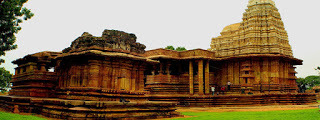 Source: Warangal Tourism
Source: Warangal TourismThe carvings you see depict scenes from mythology
The pillars, you hear again, produce music from stone
How I wish we had their bhakti and divinity
To give life to rock and make it play the sweetest sound
*************
Note:
Kala- art
*********************************************************************************
Seetha Devi Temple, Wayanad- KeralaPrabhu Ram and Devi Sita had twins
Luv and Kush, they were called
Crowned the rulers of Ayodhya
After Rama ended his avatar
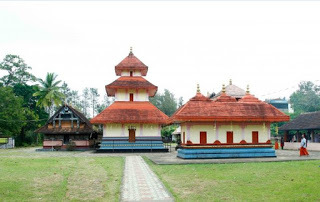 Source: Kerala Temples
Source: Kerala TemplesPulpally, a place in Wayanad, Kerala
Is the only one to have a mandir
Dedicated to the twins
Maa Sita, of course, is the main deity
Spreading love, peace, and patience
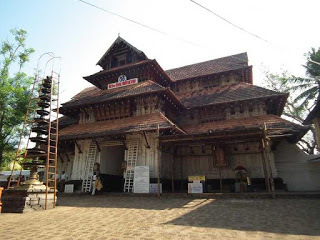 Source: Holidify
Source: HolidifyShe’s called Jadayatha amma by the locals
And was said to reside here in the Valmiki ashram
During her exile from the kingdom
********************************************************************************
Source:
https://warangaltourism.in/ramappa-temple-warangal
https://www.trawell.in/kerala/wayanad/seetha-lava-kusha-temple
*********************************************************************************
#FreeHinduTemples

April 25, 2021
Veerbhadra Swami in Lepakshi and Virupaksha in Hampi
Sometime in the early 1500s
King Achutaraya of the Vijayanagara Empire
Financed the construction of the aalayam
That became an architectural marvel
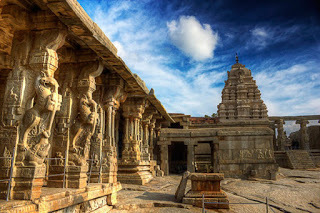 Source: Real Bharat
Source: Real BharatTwo brothers, Virupannna Mayaka and Viranna
Governors of the Empire
Built the structure by hiring
The best artisans from the kingdom
Gaining a mention in the ancient text of Skanda Purana
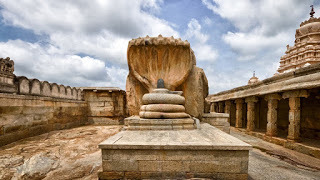 Source: Creative Stellars
Source: Creative StellarsThe walls and surfaces display the elaborate carvings
Of scenes from the Ramayana
With musical pillars and complex patterns
With a pillar that hangs in the air
Not touching the ground
Veerebhadra aalayam is proof of talent found nowhere else
Source: Amusing Planet
Outside in the premises stands the monolithic Nandi
Inside stands the murti of Veerabhadra
In his majestic glory
Prabhu Shiva and Maa Parvati reside in the eastern wing
And Bhagwan Vishnu in another chamber
While a huge boulder carved into a shiv ling
With a multi-hooded serpent shielding the lingam
Adorns the premises, attracting people from near and far
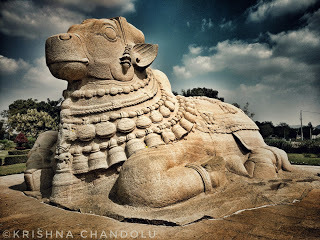 Source: Krishna Chandolu- Incredible Spiritual India
Source: Krishna Chandolu- Incredible Spiritual India ************************************************************************
Virupaksha Temple, Hampi- KarnatakaIt’s the Vijayanagara Empire again
With their love for art and architecture
Developed a 7th-century mandir dedicated to Prabhu Shiva
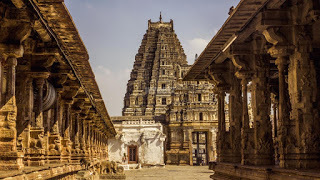 Source: Creative Stellars
Source: Creative StellarsNow a World Heritage Site, standing tall
Amidst the ruins of Hampi
Surviving the destructions by the invaders
Virupaksha devalaya* was renovated in the 19th century
To bring back its lost glory
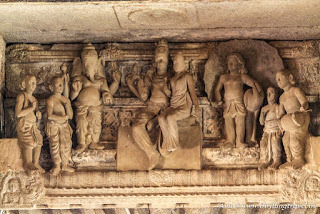 Source: Thrilling Travel
Source: Thrilling TravelThe gopuram* is 49 meters high
Built around 1442 along with the 100 pillars
Some of which play music when tapped by a chisel
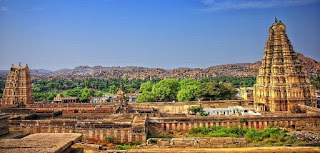 Source: Mystery of India
Source: Mystery of IndiaAn annual chariot festival, the divine marriage of
Bhagwan Virupaksha and his consort Devi Pampa
Bring bhakts from around the place
To celebrate the pious union
One day, we hope
The ruins of Hampi would rise again
To build a kingdom that would last for the future to see
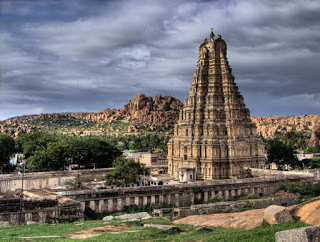 Source: India the Destiny
Source: India the Destiny**************
Note:
Devalaya- Temple
Gopuram- tower
*********************************************************************************
Source:
https://www.astroved.com/astropedia/en/temples/south-india/lepakshi-temple
https://www.karnataka.com/hampi/virupaksha-temple/
***********************************************************************************
#FreeHinduTemples

April 24, 2021
Hidden Secrets at the Little Village Church- Book review
Genre: Small Town, Feel Good, General Fiction 4.3 Stars

The little village church has a bad roof that’s ready to collapse anytime. The vicar does his bit to get donations and funds. But unless he can raise a substantial amount, nothing can save the little church. That’s when he comes up with an idea that brings two unlikely youngsters together and makes them consider their future with a fresh outlook.
Gwen and Jarvis are total opposites. Gwen is trying to recover from heartbreak, while Jarvis appears to be nothing more than an alcoholic and an idler when we first know him. The story deals with how the Visitor’s Book in the church gives them a chance to reevaluate their lives and decisions.
Hidden Secrets at the Little Village Church is truly a sweet and feel-good book set in a small village called Hopley. The backdrop of England’s countryside makes it a pleasant and soothing read. There is a mandatory stiff character or two, but the rest of them are sweet and lovable. Maybe a little too sweet, but considering the real-life situation, I’m glad to read a story that focuses on positivity.
The story is in the limited third person, with the POV altering between Gwen, Jarvis, and Vicar Dave (at times). We see things from their perspective and gain deeper insights into their lives. Gwen’s life is pretty much clear from the first instant.
Jarvis comes across as a pretty worthless guy until we see that he’s a sweet, talented, and compassionate guy struggling with confidence issues.
The writing flows well with no abrupt breaks or jerks. The narration is smooth and light. Even the heavy scenes don’t get too intense or melodramatic. The book ends on a happy note for not just all three of them but also for many others.
There are times when readers want nothing but some peace books like this one come to rescue. The book gets the extra 0.3 for the same. Overall, this may not be a must-read. But it does bring a smile to those who pick it up.
I received an ARC from NetGalley and Bookouture.
P.S: The only thing I’m not sure is about the use of ‘secrets’ in the title. There isn’t anything secretive in the book, nor does something that has to be uncovered.
#HiddenSecretsattheLittleVillageChurch #NetGalley
April 23, 2021
Ugna Mahadev in Bihar and Maa Umiya in Gujarat
How many in this world
Have been blessed to see Prabhu Shiva himself?
Makakavi Vidyapati, a well-known poet of Maithili
A great bhakt of Shiva, composed countless songs in his bhakti
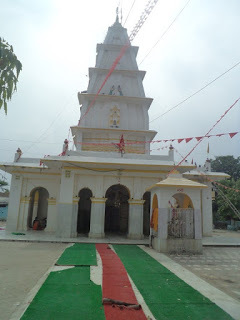 Source: RVA Temples
Source: RVA TemplesPleased Bhagwan Shiva so much
That the God himself walked onto the earth
He called himself Ungana
Offering to be the poet’s servant
Just to be with him
The poet agreed with reluctance
His finances rather meager
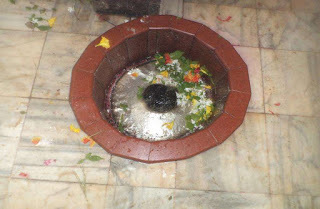 Source: PatrikaTime passed, and on a hot sunny day
Source: PatrikaTime passed, and on a hot sunny day The duo was on the way to the palace
When the poet felt parched with no water in sight
He asked Ungana to search and bring some water
Prabhu Shiva went aside
Gathered fresh Ganga from his jata*
And served it to his master
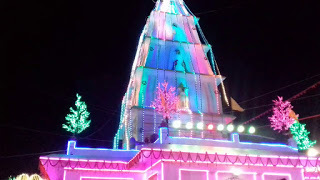 Source: Santosh Kumar Sahu- YouTube
Source: Santosh Kumar Sahu- YouTubeThe poet, upon tasting the water
Realized that the man was no human
He fell at his Prabhu’s feet
When Shiva revealed his true form
And declared that he would continue to be with the poet
The duo was to be known as Ugna, and no one would see the truth
***************
Note:
Jata- dreadlocks (hair)
*********************************************************************************
Umiya Temple, Unjha- GujaratMaa Umiya is none other than Devi Sati
The wife of Bhagwan Shiva,
Who before jumping into the yagna pyre
Wished to be born and wed Shiva again
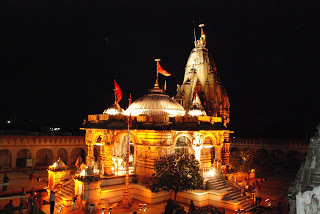 Source: NiravV- Pinterest
Source: NiravV- PinterestIt was when Shiva had to kill the demon Taraksur
That he and Maa Uma went to the banks of River Saraswati
Where she created 52 idols and Shiv Ji brought them to life
Known as the Kadva Patidars,
The community grew with Maa Uma’s blessings
And Prabhu Shiv established Maa Uma at Umapur
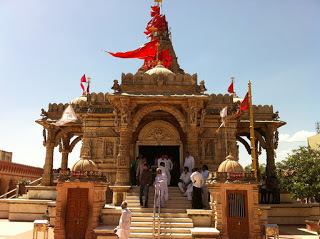 Source: Maa Umiya
Source: Maa UmiyaIn 156 BC, King Vrajpal Sihji built the mandir
It was followed by another temple
Built by King Vegda Gami
Only to be demolished by Khilji’s commander Ulugh Khan
The murti was saved and preserved
While the actual foundation of the temple was lost
The existing structure was built by the Patidar community in 1887
With every household in the community
Contributing to the pious cause
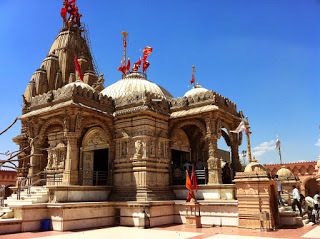 Source: Temple Travel
Source: Temple Travel**********************************************************************************
Source:
https://www.maaumiya.com/templeinfo/templehistory
*******************************************************************************
#FreeHinduTemples

April 22, 2021
Snowed in Tungnath on the way to Terracotta Temples
More than 1000 years old, the Tunganath mandir
Stands against the backdrop of the mighty Himalayas
Located on Chandranath Parvat,
It is the highest Shiva temple at an elevation of 3680 meters
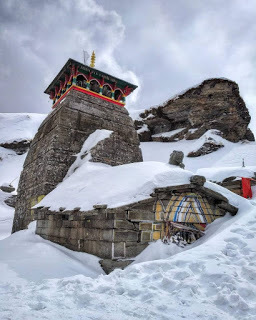 Source: Qing Lu- Pinterest
Source: Qing Lu- PinterestThe mandir they say was built by the Pandavas
To appease and seek the blessings of Prabhu Shiva
For killing their evil cousins, Kauravas
In the epic battle of Mahabharata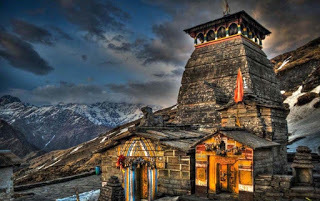 Source: Delhi Planet
Source: Delhi PlanetUpon Vyasa Rishi’s advice, the five brothers,
Went in search of Prabhu Shiva, who hid at Guptkashi
In the form of a bull to avoid the Pandavas
The Pandavas found five parts of the bull
Each at a different location
Where they began to build a mandir
That came to be known as the Pancha Kedar
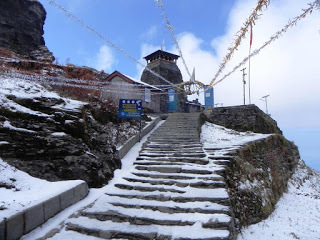 Source: Amar Ujala
Source: Amar UjalaAt Tunganath, it’s the hands that fell
With the hump at Kedarnath, stomach at Madhyamaheshwar
And the dreadlocks at Kalpeshwar.
***************************************************************************
Terracotta Temples, Bishnupur- West BengalBelonging to the Samudra Gupta period
The region got its name as Bishnupur in the 10th century
A renowned center for arts, architecture, and music
For hundreds of years
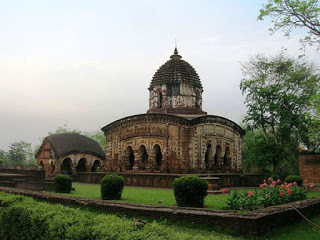 Source: Native Planet
Source: Native PlanetA bhakti movement in the 16th century,
The Gaudiya Vaishnava movement
To spread the bhakti of Bhagwan Vishnu
Was started by a saint and a social reformer, Chaitanya Mahaprabhu
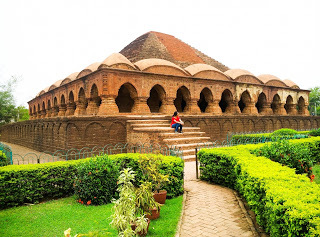 Source: Making heritage Fun
Source: Making heritage FunThe Terracotta mandir has inscriptions dating to the movement
And the murtis resembling the ones at Vrindavan
Built in the typical bangle do-Chala style
The Rasamancha, the Jor Bangla, and the Keshto Raya mandir
Flaunt a unique architectural design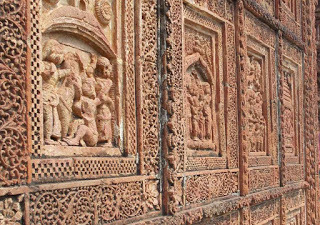 Source: Tripoto
Source: Tripoto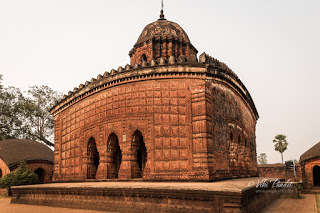 Source: Viki Pandit
Source: Viki Pandit****************************************************************************
Source:
https://www.euttaranchal.com/tourism/tungnath.php
https://www.india.com/travel/articles/tungnath-home-to-the-worlds-highest-shiva-temple-3647496/
https://www.sacredyatra.com/tungnath.html
https://www.tourmyindia.com/states/uttarakhand/tungnath.html
https://www.sahapedia.org/terracotta-temples-of-bishnupur
https://www.wbtourismgov.in/destination/place/bishnupur
*****************************************************************************
#FreeHinduTemples

April 21, 2021
Sail from Shore Temple to Sashtra Bahu Temple
Shore Temple, Mahabalipuram- Tamil Nadu
A temple that stands on the shore of Mahabalipuram
A structure that resembles a giant chariot from a distance
A World Heritage Site from the 700 AD
The Shore temple is a marvel to behold
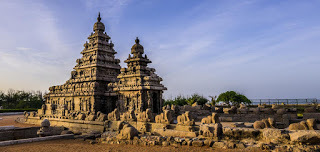 Source: Outlook India
Source: Outlook IndiaWhen the Pallavas ruled, King Narasimhavarma II
Built the temple in the flourishing port city
It was to be a landmark for the ships that arrived
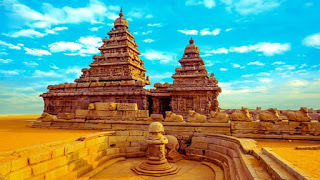 Source: Optima Travels
Source: Optima TravelsThe Cholas came next, invading the region,
Adding more structures and expanding the Shore temple
There stood not one, but seven called the Seven Pagodas
Resembling the pyramids
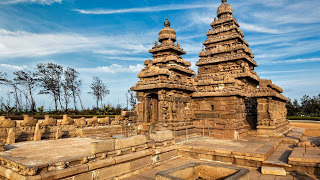 Source: Trip Savvy
Source: Trip Savvy Years passed, and the tides rose
One by one, the temples vanished into the waves
Leaving behind just one structure
To share the glory of the dynasties that ruled
And of the story that comes from eons ago
When Bali the son of Prahalada,
The grandson of King Hiranyakashipu
founded Mahabalipuram, the city with ancient history
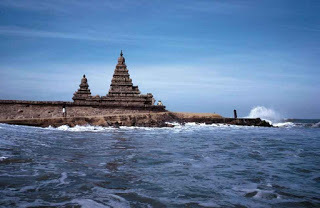 Source: Tripoto
Source: TripotoShore temple has another name
Jalashayana, lying in waters
Due to its proximity to the sea
That continues to threaten to swallow it whole
********************************************************************************
Sahastra Bahu Temple, Udaipur- RajasthanWhoever said a mother-in-law and a daughter-in-law
Cannot have a harmonious relationship
When a mandir complex house two shrines
One for each to pray to their favorite deities
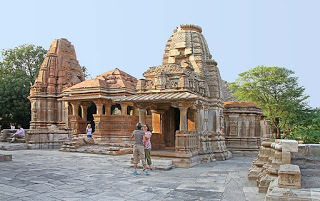 Source: Swan Tours
Source: Swan ToursThe story began thus, sometime in the 10th century
When king Mahipala of the Kachchhwaha dynasty
Build a mandir of Bhagwan Vishnu
For his Queen Mahipala
Who was a great bhakt of the Sahastrabahu*
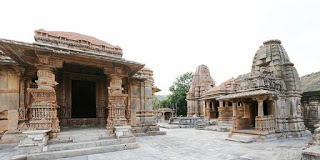 Source: Udaipur Tourism
Source: Udaipur TourismInspired by the father, the prince followed his footsteps
Built another shrine for Prabhu Shiva
So that his queen could pray in peace
With intricate carvings from Ramayana filling the space
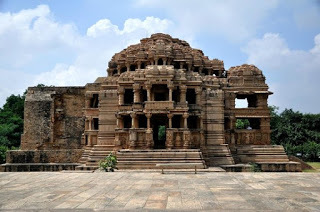 Source: Trip Advisor
Source: Trip AdvisorWhat you see now are the ruins
When the invaders and conquers
Destroyed the temple
Leaving bits and pieces for the future to see
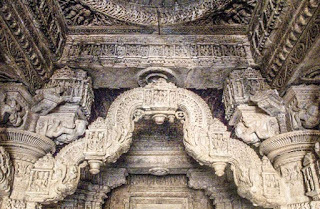 Source: Patrika
Source: Patrika
**************
Note:
Sahastrabahu- the one with thousand arms
********************************************************************************
Source:
https://www.nativeplanet.com/travel-guide/shore-temple-in-mahabalipuram-001941.html
https://udaipurtourism.co.in/sas-bahu-temple-sahastra-bahu-temple-udaipur
********************************************************************************
#FreeHinduTemples

April 20, 2021
Ranganatha Temple and Rajarajeshwara Temple- Andhra & Kerala
Founded by King Raja Mahendra Varma in the 7th century
The Talpagiri Ranganathaswamy aalayam
Was built in the 12th century on the banks of River Penna
The Galli gopuram* stands 70 feet tall
Surrounded by 10 feet gold plated ships, kalasam
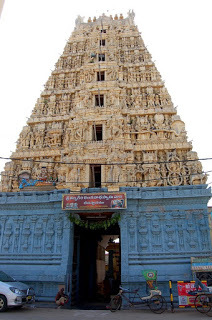 Source: Templevihar
Source: TempleviharBhagwan Vishnu reclines at this aalayam
On his favorite Adisesha*
Who was sent to earth in advance
To create an abode for Bhagwan Vishnu and his wife, Maa Sridevi
The king of snakes, Adisesha chose this region
To turn into a hill, awaiting his master’s arrival
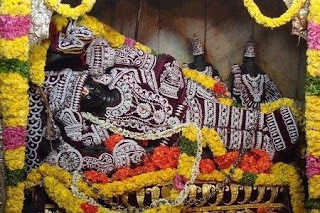 Source: Vihara Darshani
Source: Vihara DarshaniEtched on the walls of the Sanctorum you can see
Sri Vishnu Sahasranamavali, the 1000 names of Bhagwan Vishnu
A treat for the bhaktas who visit
Especially during the Brahmotsavam,
A yearly grand celebration during spring
To pray for a happy and healthy life
Source: Trip Advisor
***************
Note:
Gali gopuram- literally translation is a wind tower Adisesha- King of snakes Talpa- snake bed Giri- hill
********************************************************************************
Rajarajeshwara Temple, Kannur- KeralaOh, what a significance this kshetram* has!
Located in the Taliparamba village
Where women can enter and pray
Only after 8 in the evening
The reason they say is Prabhu Shiva sits with his consort
Devi Parvati during the evenings
And is happy to fulfill the wishes
Of women who pray to the couple
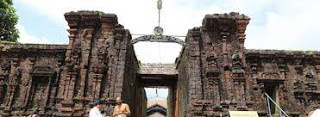 Source: Kerala Tourism
Source: Kerala TourismThe history of the kshetram dates eons ago
When Parasurama* visited the region
Identified the spiritual powers of an ancient shrine in ruins
He called Narada Mahamuni* to know more
And was told of a story that spanned across the yugas*
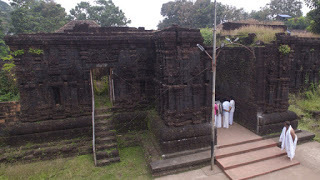 Source: Kerala TourismThree lingams lay buried deep inside the earth
Source: Kerala TourismThree lingams lay buried deep inside the earth One from the Treta yuga* and two from the Dwapara yuga*
Parasurama then called upon the celestial architect, Viswakarma
To rebuild the aalayam and brings back its lost glory
The kings from the later generations worked
Renovating the structure to keep it intact
As the lamp lit by Agasthya muni still shines bright
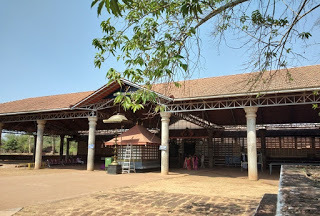 Source: TrawellThe story doesn’t end here, as Prabhu Rama
Source: TrawellThe story doesn’t end here, as Prabhu Rama During his return to Ayodhya from Lanka
Prostrated before the lingam in the Namaskara Mandapam
And thus came the tradition
Where no other human would do so in the same place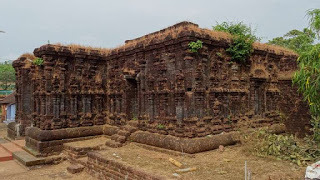 Source: DTPC Kannur
Source: DTPC Kannur*****************
Note:
Kshetram- temple Parasurama- an avatar of Bhagwan VishnuNarada Mahamuni- a celestial sage and a storyteller; a catalyst in every major change that took place over the eonsTreta yuga- the second yuga for the four cycles in Hinduism Dwapara yuga- the third yuga One yuga is equal to 4,320,000 years
**********************************************************************************
Source:
https://templesinindiainfo.com/nellore-talpagiri-ranganatha-swamy-temple-history-timings-address/
https://www.keralatourism.org/temples/kannur/raja-rajeswara-taliparamba
**********************************************************************************
#FreeHinduTemples


